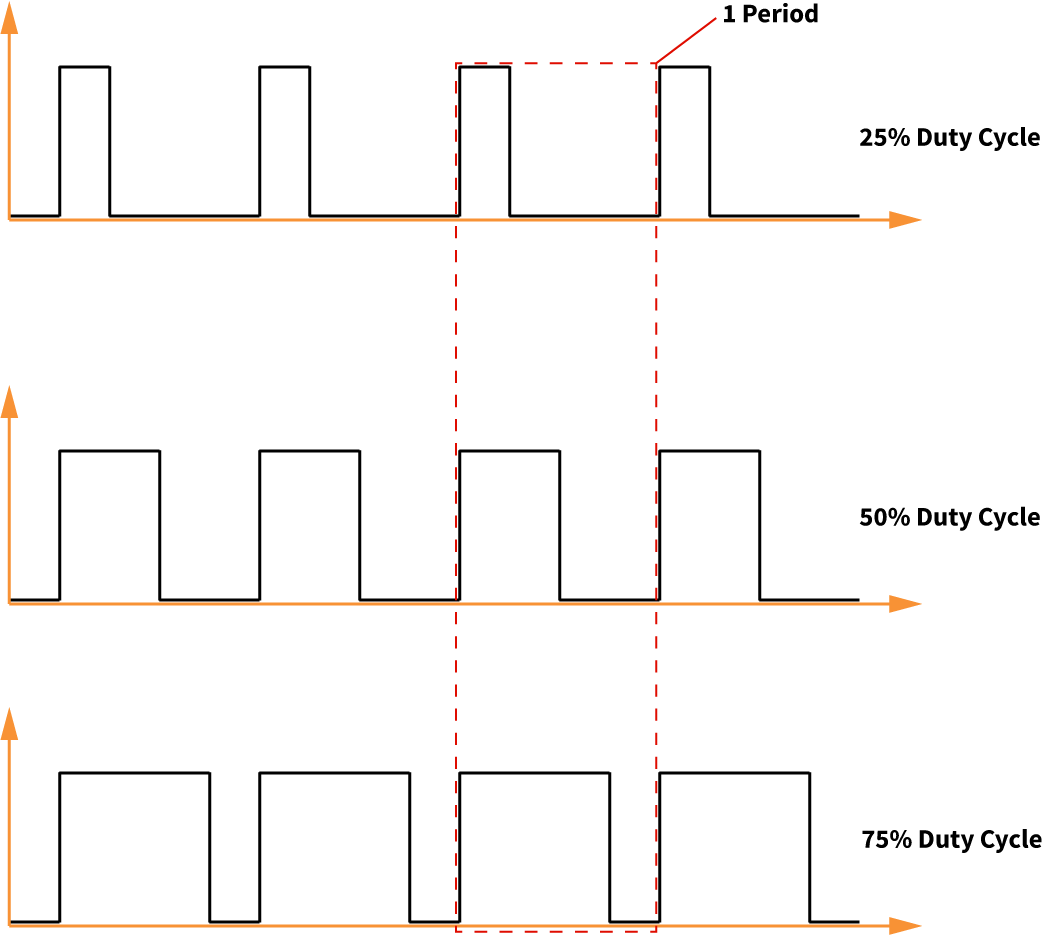03 PWM
PWM

PWM stands for „Pulse Width Modulation“. With this method, the ratio of the switch-on time to the defined period duration is varied. Pulse width modulation is used to control the speed or brightness of loads such as motors or LEDs.
The duration of a period is usually a few milliseconds or less. In practice, this means that the corresponding consumer is switched on and off several hundred times per second. The longer the switch-on time in a period, the more energy can be transferred to the consumer. In other words, the longer the duty cycle, the faster the motor turns or the brighter the LED lights up. In the following 3 examples you can see how PWM signals with 25%, 50% and 75% duty cycle differ from each other. At 0% duty cycle the consumer is off. Whereas at 100% duty cycle the motor runs at full speed and the LED is as bright as possible.